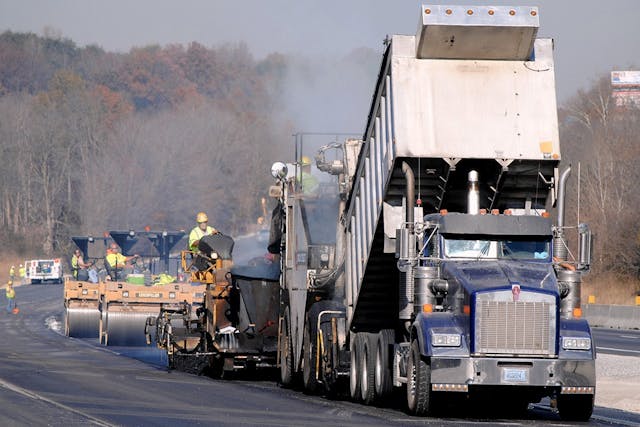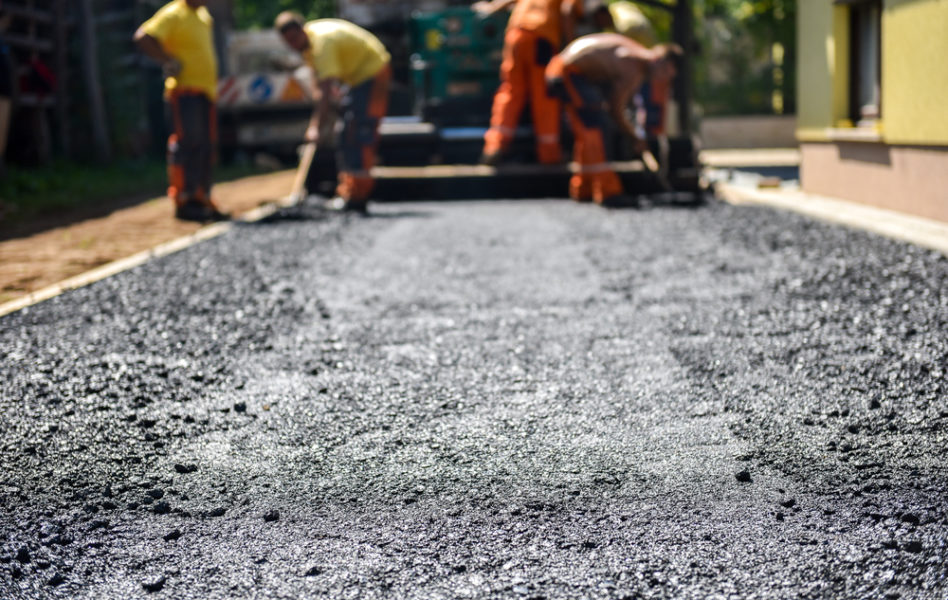Hot Mix Asphalt Paving: Elevating Commercial Parking Lot Requirements
Hot Mix Asphalt Paving: Elevating Commercial Parking Lot Requirements
Blog Article
Opening the Keys of Hot Mix Asphalt Technology
Checking out the depths of hot mix asphalt technology reveals a globe where precise procedures and specific formulations assemble to form our roadways and facilities. The combination of binders, fillers, and aggregates isn't merely a building and construction job yet a tactical orchestration of sturdiness and effectiveness.
Relevance of Warm Mix Asphalt
Warm Mix Asphalt plays an important duty in contemporary framework advancement due to its resilience and cost-effectiveness. As one of the most typically utilized paving material for roads, freeways, and vehicle parking great deals, Warm Mix Asphalt provides a variety of advantages that add to its importance in building tasks. One key benefit is its capability to withstand rush hour loads and extreme climate condition, giving a dependable and lasting surface area for transportation networks. Additionally, Hot Mix Asphalt is affordable in both preliminary construction and lasting upkeep, making it a recommended selection for numerous framework jobs.
The longevity of Hot Mix Asphalt comes from its make-up, that includes aggregates, binder, and filler materials that are meticulously selected and mixed to satisfy particular efficiency requirements. This exact mix results in a versatile and strong sidewalk that can sustain regular usage without considerable damage. Hot Mix Asphalt is 100% recyclable, more boosting its sustainability and ecological advantages. On the whole, the importance of Warm Mix Asphalt in framework advancement can not be underrated, as it remains to be a keystone of contemporary construction practices.
Components of Asphalt Mixes
The composition of asphalt blends consists of very carefully selected aggregates, binder, and filler products that are crucial for accomplishing details efficiency demands. Accumulations are the main component of asphalt mixes, giving strength and stability. The binder, usually asphalt or asphalt cement, holds the aggregates with each other and supplies versatility and resilience to the mix.
The combination and percentage of these elements play a significant function in determining the top quality and efficiency of the asphalt mix. Designers thoroughly create the mix to fulfill particular demands, considering variables like traffic quantity, environment problems, and sidewalk life-span. Correct option and harmonizing of accumulations, binder, and fillers are essential for producing durable, lasting asphalt sidewalks.
Mixing and Production Strategies

Once the aggregates are selected, the binder, commonly asphalt concrete, is included in bind the products with each other. The binder's quality and quantity substantially impact the mix's toughness, resistance, and adaptability to ecological factors. In addition, fillers like moisturized lime or Portland concrete may be incorporated to boost details qualities of the asphalt mix, such as its workability or wetness resistance.
During production, the aggregates and binder are heated up, usually between 250-325 ° F(121-163 ° C ), to facilitate blending and make sure proper finishing of the aggregates. The mixing procedure should be complete to attain a homogeneous blend that promotes the wanted performance features of the asphalt. Various strategies, such as batch blending or drum mixing, are utilized to attain premium and consistent asphalt blends for building projects.
Variables Impacting Asphalt Performance
Aspects influencing asphalt performance include a variety of variables that influence the resilience, longevity, and total top quality of asphalt pavements. One crucial aspect is the top quality of hop over to here products utilized in the asphalt mix. The kind and resource of aggregates, the binder quality, and the additives all play a considerable role in figuring out the efficiency of the asphalt pavement. The gradation of aggregates is critical as it impacts the mix's security, you can try these out workability, and resistance to breaking and rutting.

Environmental problems likewise affect asphalt performance. Temperature level variants, moisture seepage, and traffic loads can all influence the structural honesty of the pavement. Style considerations, such as sidewalk density and drainage, are vital in guaranteeing the long-term efficiency of the asphalt sidewalk. By meticulously considering these variables, designers and service providers can enhance asphalt efficiency and boost the service life of sidewalks.
Lasting Practices in Asphalt Technology

WMA permits for the manufacturing and positioning of asphalt blends at reduced temperature levels contrasted to conventional hot-mix asphalt, resulting in minimized power consumption and greenhouse gas exhausts. The use of porous asphalt blends can help mitigate stormwater drainage concerns by allowing water to penetrate through the pavement and right into the ground, promoting all-natural water filtration and recharge processes.
Conclusion
To conclude, warm mix asphalt navigate here technology plays an essential duty in modern-day facilities growth as a result of its toughness and cost-effectiveness. By carefully balancing parts, using correct mixing methods, and considering various aspects, designers can produce top notch asphalt blends that hold up against heavy traffic loads and extreme climate condition. Accepting lasting techniques, such as utilizing recycled products and warm-mix innovations, better improves the environmental kindness of asphalt modern technology.
Blending and manufacturing methods in hot mix asphalt technology entail the exact combination and processing of accumulations, binder, and fillers to produce a high-performance and durable asphalt mix.Factors influencing asphalt efficiency incorporate a variety of variables that influence the longevity, long life, and overall high quality of asphalt pavements. Lasting practices in asphalt innovation encompass different initiatives aimed at lowering the ecological effect of asphalt production and paving processes. By integrating recovered asphalt sidewalk (RAP) and recycled asphalt tiles (RAS) into new asphalt mixes, the sector can considerably reduce the usage of raw materials and energy, while likewise decreasing landfill waste.
WMA allows for the production and positioning of asphalt mixes at lower temperatures contrasted to conventional hot-mix asphalt, resulting in minimized power intake and greenhouse gas exhausts.
Report this page